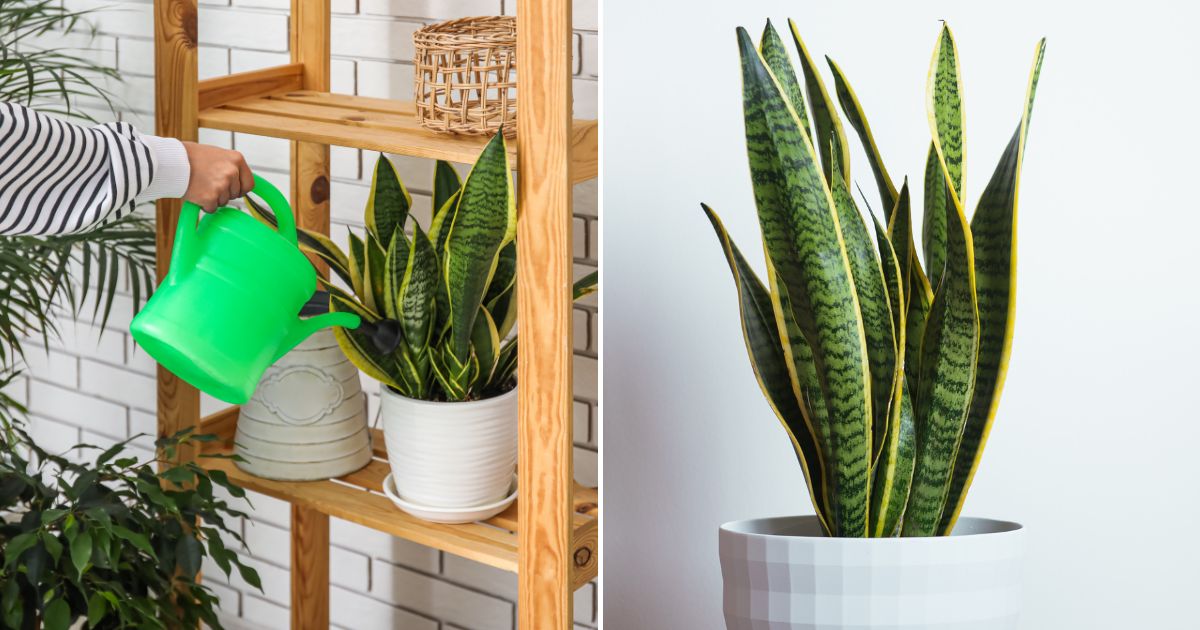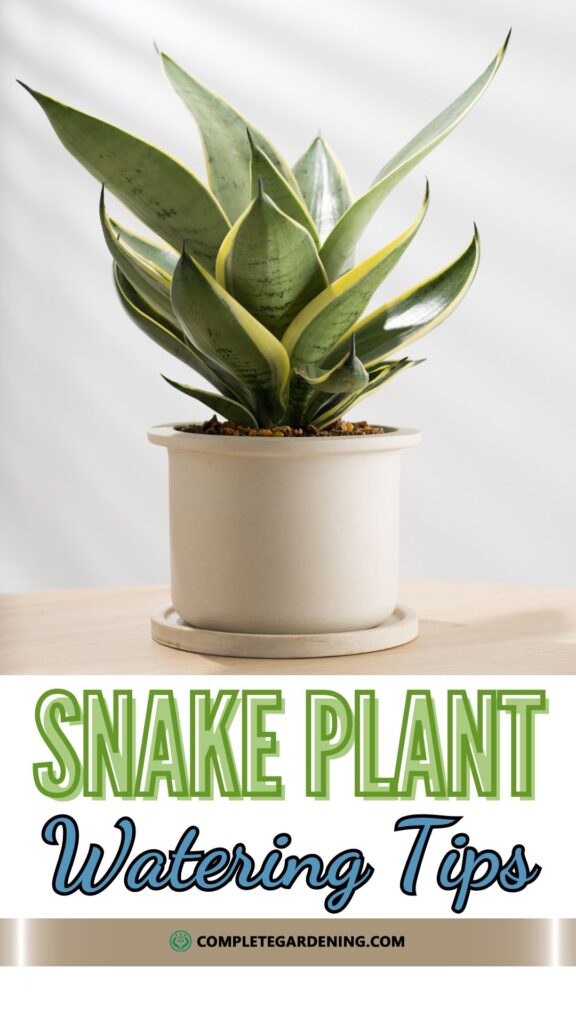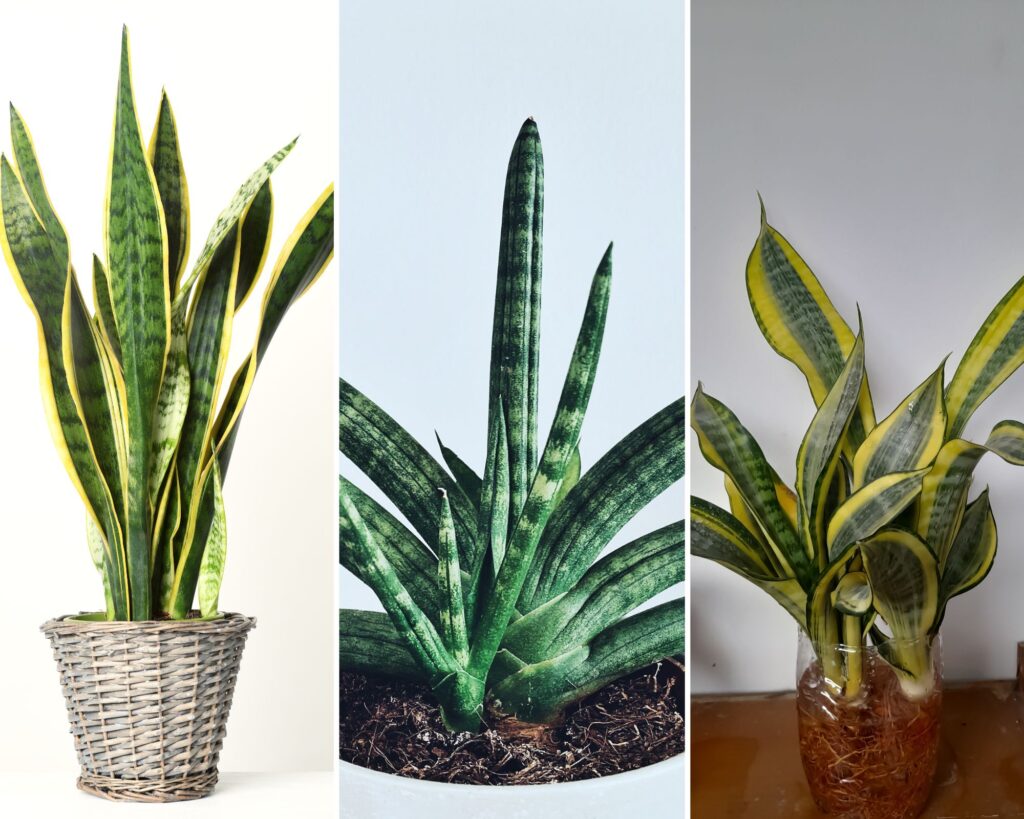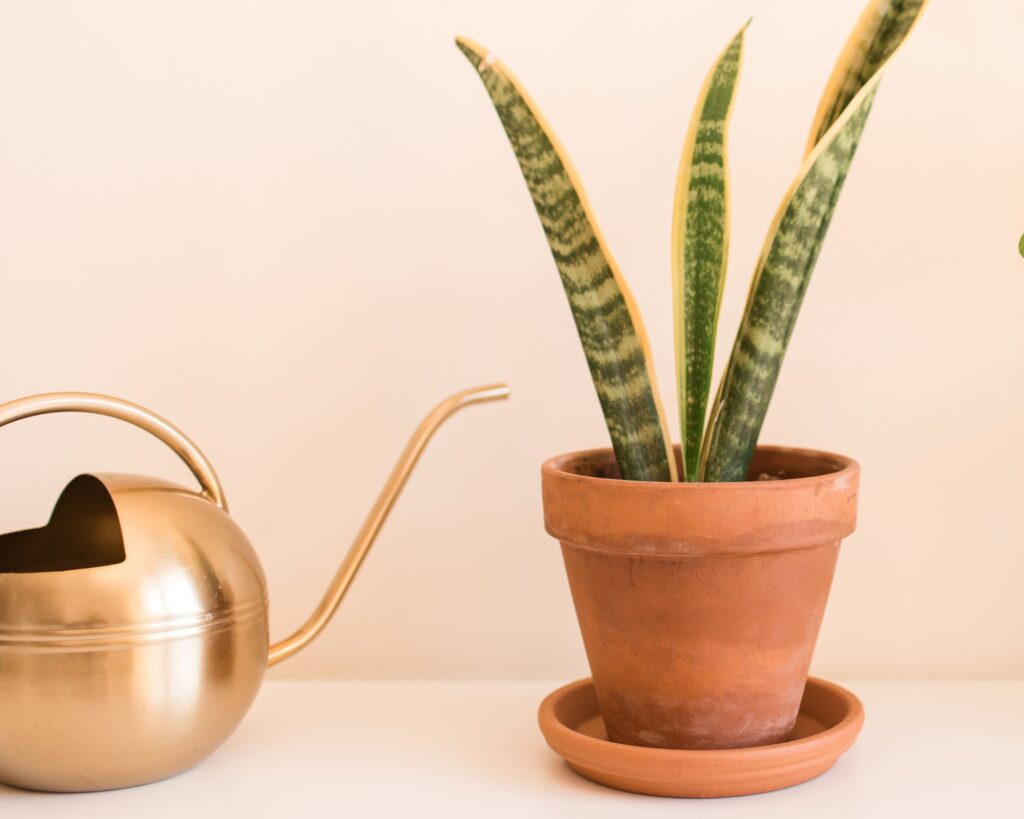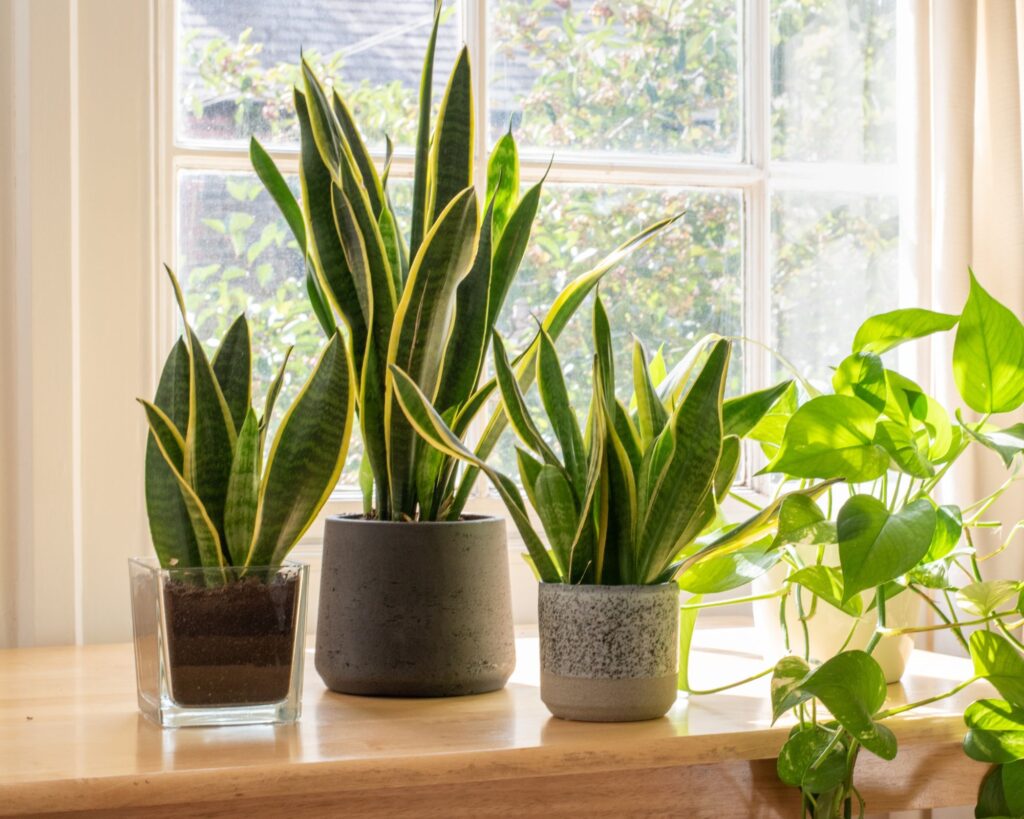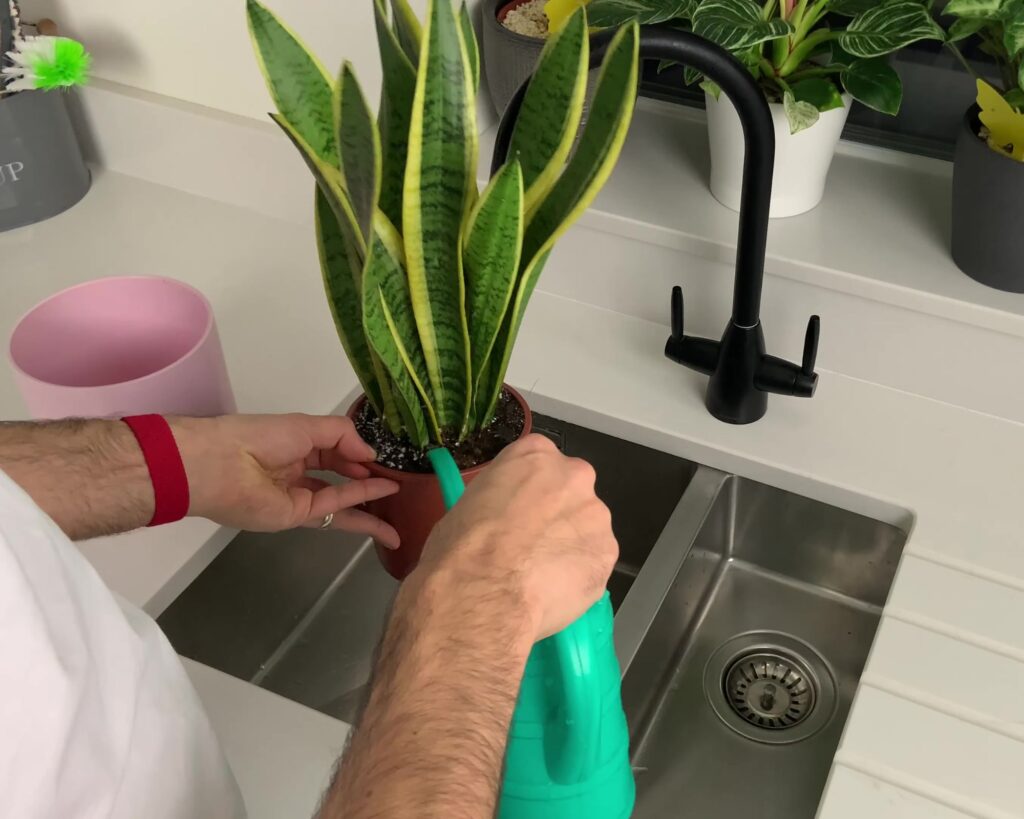Snake plants are often hailed as the superheroes of indoor greenery—unfazed by neglect and thriving even in the most forgetful households. But do you know the secret to unlocking their true potential? The key lies in mastering the art of watering.
Rather than drenching them regularly, these hardy plants prefer a more hands-off approach. Letting the soil dry out completely before giving them a deep soak can make all the difference between a thriving snake plant and one struggling with root rot.
Ready to discover how to keep your snake plant looking its best? Let’s dive in and uncover the simple yet effective watering techniques that will keep your plant flourishing year-round.
Understanding Snake Plants
Snake plants, also known as Sansevieria, are hardy and low-maintenance plants that come in various types. Proper watering of these plants is essential for their health and longevity.
Types of Snake Plants
Snake plants vary widely in appearance, with some popular types including Sansevieria trifasciata, Sansevieria cylindrica, and Sansevieria laurentii. The Sansevieria trifasciata is commonly recognized by its long, upright, green leaves with light yellow edges.
The Sansevieria cylindrica has cylindrical, more rigid leaves that can spiral as they grow. The Sansevieria laurentii is similar to the Sansevieria trifasciata, but its leaves have a distinctive, horizontal striping pattern. Each type may have specific care requirements, especially when it comes to watering.
Benefits of Proper Watering
Proper watering is crucial for snake plants to thrive. Regular watering helps the plant maintain its structure and beauty. Overwatering, on the other hand, can lead to root rot, while underwatering may cause the leaves to wilt and curl.
By watering correctly, you ensure your snake plant remains vibrant and healthy. This not only enhances its appearance but also boosts its air-purifying abilities. Healthier snake plants are more efficient at removing toxins from the air, providing a cleaner environment for you.
Assessing Your Snake Plant’s Water Needs
To properly water your snake plant, consider the soil type, environmental factors, and the season. Each aspect affects how much water your plant requires.
Soil Type and Drainage
Your snake plant thrives in well-draining soil. Using a mix designed for cacti and succulents ensures proper drainage. Waterlogged soil can cause root rot, so avoid heavy, compacted soils.
Check that your pot has drainage holes to remove excess water. Tip: Terra cotta pots are excellent for promoting airflow and improving soil drainage. Regularly monitor soil moisture by sticking your finger about an inch deep; it should feel dry before watering.
Environmental Factors
Light, humidity, and temperature in your home greatly influence water needs. Bright, indirect light is ideal for snake plants, but they can adapt to low-light conditions.
Low humidity means more frequent watering, while high humidity reduces the need. Keep your home temperatures stable, ideally between 65-85°F (18-29°C). Avoid drafts and heater vents, as they can dry out your plant.
Seasonal Considerations
Seasonal shifts have a significant impact on your watering schedule. During active growth in spring and summer, your snake plant will require more frequent watering, roughly every 2-3 weeks.
In fall and winter, growth slows down. Watering once a month is usually sufficient. Always adjust based on conditions in your home; over-watering is more harmful than under-watering during these dormant months. Regularly check the plant and soil to ensure you’re meeting its specific needs.
The Right Watering Technique
Watering your snake plant properly ensures it stays healthy and vibrant. Focus on frequency, technique, and avoiding overwatering.
Frequency and Schedule
Snake plants thrive on a light touch. Aim to water your plant about once every two weeks. During winter months, extend this frequency to once a month as the plant’s growth slows. Always let the soil dry completely between waterings. Checking the soil moisture with your finger ensures you’re not watering too soon.
The Bottom-Watering Method
The bottom-watering method is excellent for snake plants. Place the pot in a shallow dish filled with water and allow the soil to soak up moisture from below for about 15-20 minutes. This prevents water from sitting on the leaves, which can cause rot. It also ensures the soil is evenly moist.
Avoiding Overwatering
Avoiding overwatering is essential. Too much water leads to root rot, which can kill your plant. Use well-draining soil and a pot with drainage holes to help excess water escape. Always check soil moisture before watering. If the soil feels dry, it’s time to water your plant. If it’s still moist, wait a few more days.
Maintaining Plant Health
Keeping your snake plant healthy mainly involves ensuring it receives the right amount of water and identifying signs of both adequate and inadequate watering.
Signs of Adequate Watering
When your snake plant is well-watered, its leaves will be firm and upright. Healthy leaves should be a vibrant green color without any brown or yellow spots. Also, the soil should be moist but not waterlogged.
You may notice new growth if the plant is thriving, with small shoots emerging from the base. Regular, even watering will lead to consistent growth, preventing the plant from becoming too dry or overly saturated.
Another sign of adequate watering is the overall appearance of the plant. It should look healthy, sturdy, and free from any signs of distress or disease.
Troubleshooting Common Issues
If your snake plant is showing brown tips or edges on the leaves, it could be a sign of underwatering. In this case, check the soil occasionally; if it feels dry to the touch, it’s time to water.
Conversely, yellow leaves can indicate overwatering. If the soil remains wet for too long and there’s a foul odor, it may lead to root rot. It’s crucial to let the soil dry out between waterings to avoid this problem.
Pest infestations, like mealybugs or spider mites, can also hinder plant health. Regularly check the leaves and soil, and consider using natural remedies or insecticidal soap if pests are found.
Mastering the art of watering your snake plant is essential for ensuring its long-term health and vitality. By understanding the specific needs of your plant—such as the importance of letting the soil dry out between waterings, choosing the right soil type, and adjusting your watering routine based on environmental conditions—you can prevent common issues like root rot and overwatering.
Proper watering not only keeps your snake plant vibrant and sturdy but also enhances its natural air-purifying abilities, creating a healthier living environment for you. With the right care, your snake plant will thrive and remain a resilient, low-maintenance addition to your indoor garden.
